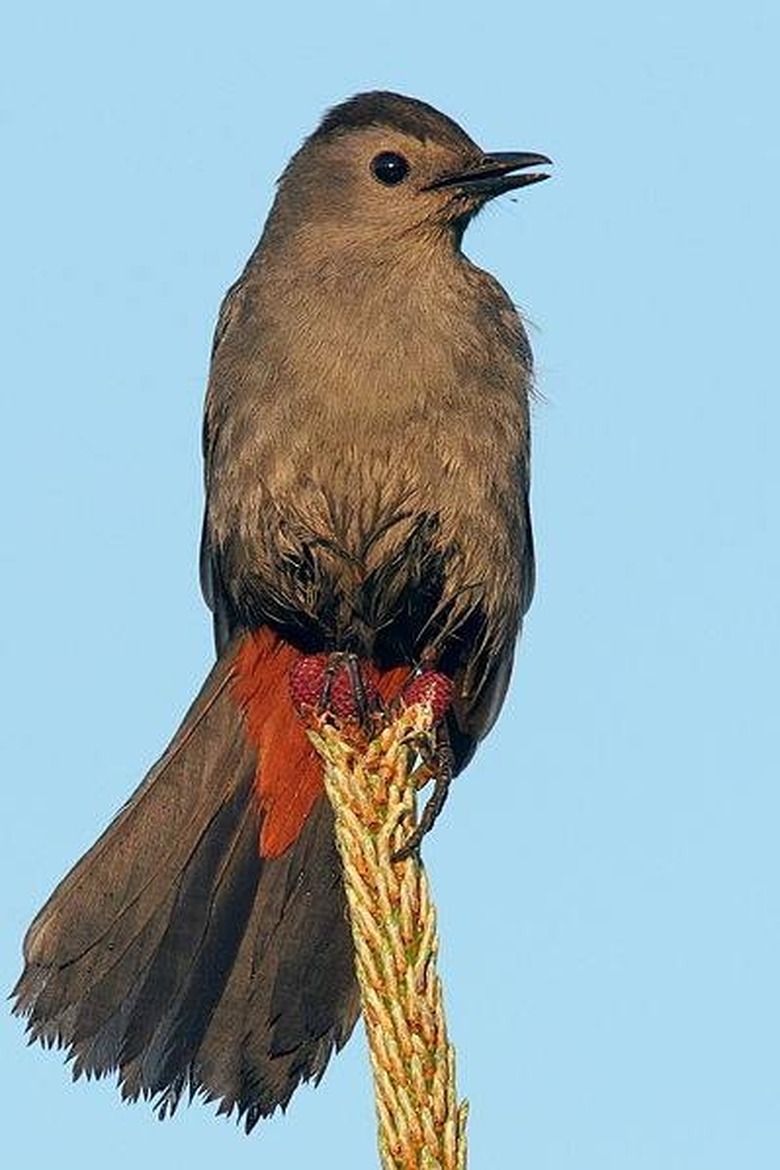How To Get Rid Of Catbirds
Things Needed
- Liquid bird repellent
- Water cannon
- Aluminum foil
- Red Christmas tinsel
Catbirds are easily identified by their distinctive call–raspy, loud and seriously lacking in melodic content. They begin to broadcast their cat-like cry at sunrise. They continue to chirp loudly all day long for no apparent reason. If that did not provide enough motivation to want to be rid of them, they are also not intimidated by the family cat or the family dog. Upon sighting a possible enemy, catbirds screech and swoop down in apparent attack, pestering household pets without mercy. This combination of continuous racket and vindictive pestering is enough to cause even the most-devoted bird lover to declare a catbird war.
Step 1
Remove any obvious sources of food. Take down your bird feeders and move your pet food inside, if possible. Additionally, you should cover any fruit-bearing shrubs with bird nets and apply an all-purpose insecticide to your property. Catbirds primarily dine on berries and bugs, but they will take advantage of other food sources if they have to.
Step 2
Reduce possible nesting sites. Catbirds like to build nests close to the ground. They shelter their young by hiding the nest in thick shrubbery or tree branches. Keep the branches of your foliage trimmed, reducing the cover they offer; catbirds are much less likely to find your yard appealing.
Step 3
Treat any currently popular hangouts with a liquid bird repellent. Combine 2 tbsp. white glue, 2 tbsp. garlic powder, 2 tbsp. ground pepper and 2 qts. water. Mix until well blended and drench any leaf litter or shrubbery that seems favored by the catbirds, as this is where they are most likely to forage for food. Contact with treated areas will give any nearby fodder an unpleasant taste that the birds will find unappetizing.
Step 4
Launch a counterattack. Purchase a large squirt gun or water cannon. Select one that shoots up to 70 feet. Fill the canister with a combination of water and Tabasco sauce. When the catbirds start to screech, shoot them. When their living conditions become unpleasant enough, they will move to greener pastures.
Step 5
Scare them away, if you can. Tie long pieces of aluminum foil to tree branches or hang red metallic tinsel in the trees. Bright, shining objects flash when the sun strikes them; these flashes frighten most species of birds, as they resemble fire.
Tip
Many birds will panic at the sight of a predator, such as a cat, hawk, owl or snake. This is not true of the catbird, who responds to predators in an aggressive manner. The use of standard predator-based bird repellents, such as plastic owls or rubber snakes, is not recommended.
Warning
Catbirds are protected by law in the United States; therefore, you cannot take any action that will intentionally harm them.
